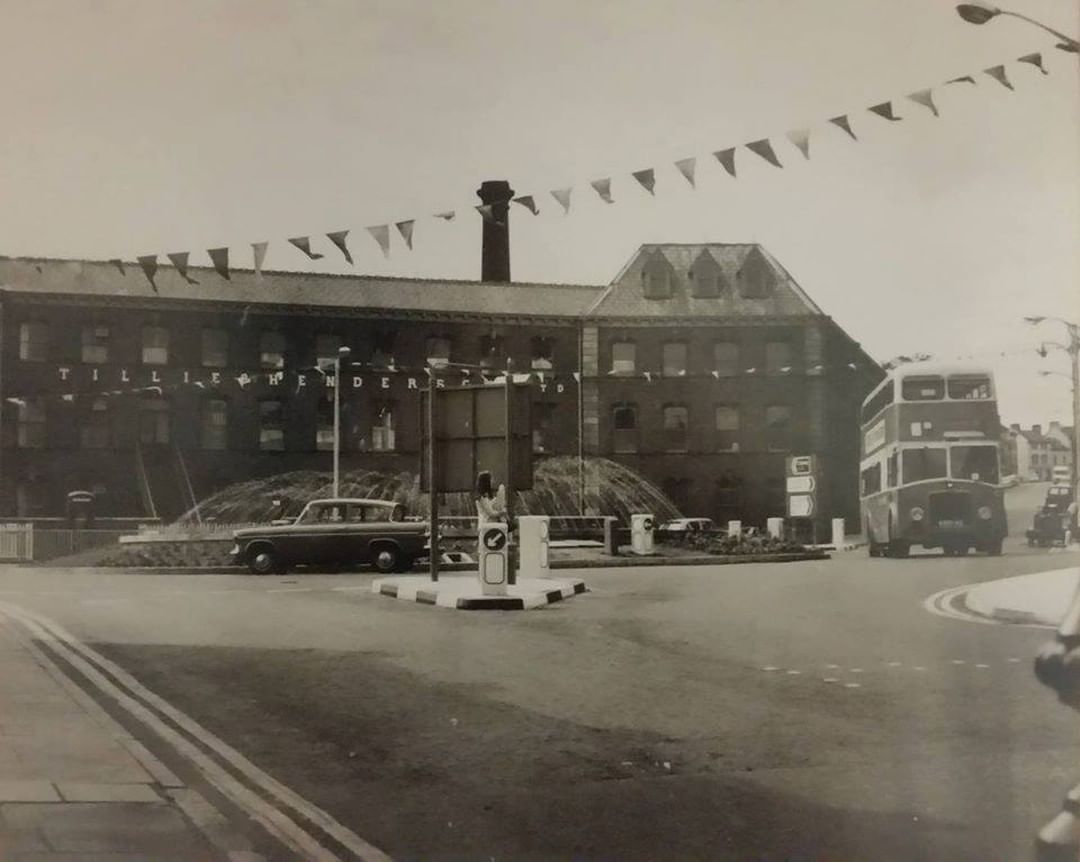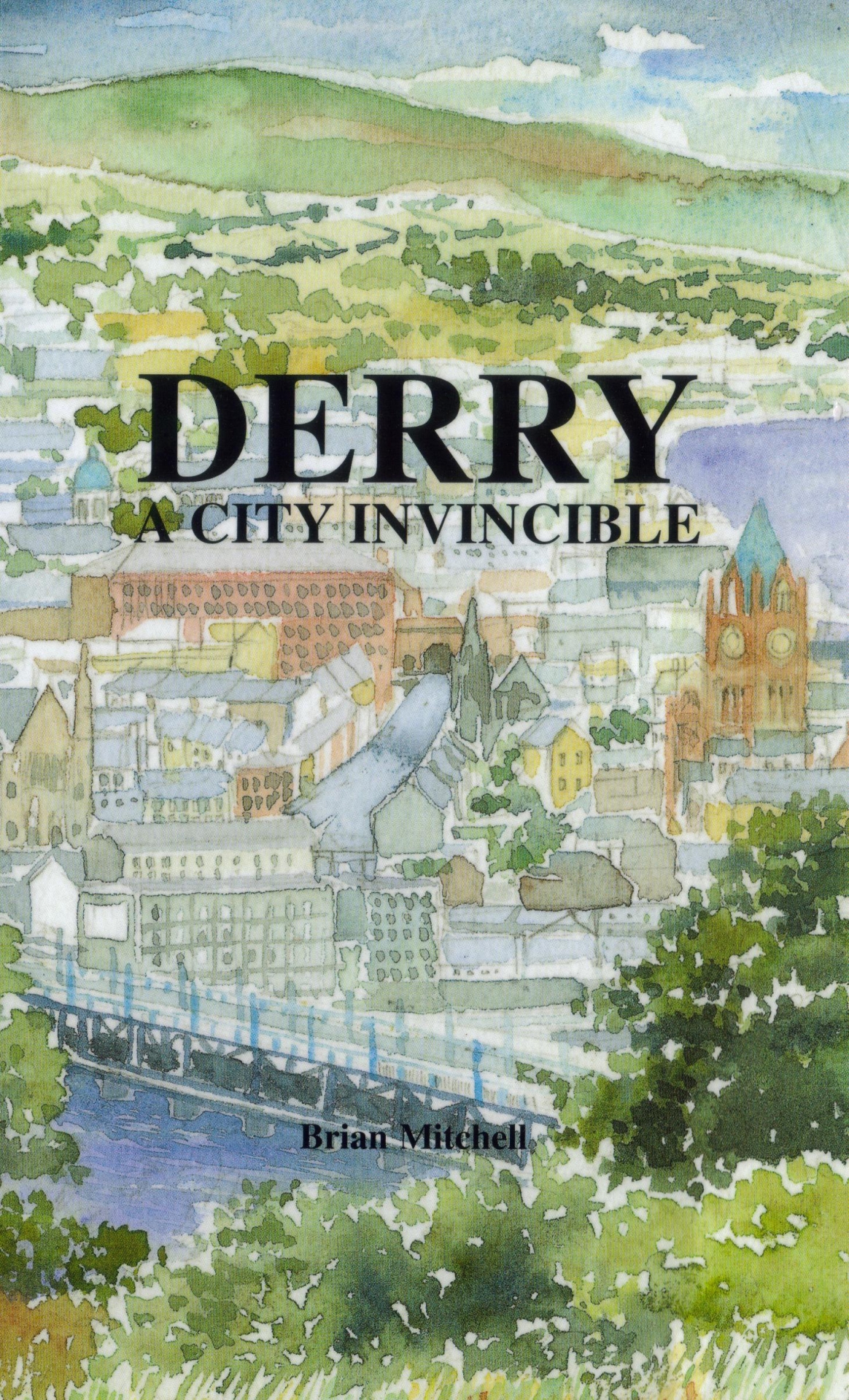
The women of Derry's shirt factories.
In 1821 Derry was the twelfth largest town in Ireland, by 1911 she was the fourth.
In 1821 Derry was only twice as big as her rivals, Strabane and Coleraine, and four times the size of Letterkenny.
By 1911 she was five times as big as Coleraine, eight times the size of Strabane and eighteen times the size of Letterkenny.
In 1821, with a burgeoning coasting trade in linen and provisions to Britain, a growing emigration trade to North America and a prosperous linen industry, Derry was a small but vigorous town of 9,313 souls.
Apart from Belfast, whose population increased ten-fold, no other town of significance in Ireland had anywhere near the rate of growth of Derry.
In fact, of the eighteen major Irish towns in 1821 with a population of over 8,000 eleven had declined in size by 1911.
Seven did increase in size, but only two, Belfast and Derry, actually more than doubled in size.
How does one account for this growth?
In the 19th century expansion was the exception rather than the norm within Ireland.
Yet during that time Derry stamped her dominance over her local rivals, and emerged as an important urban centre within Ireland.
The answer lies in Derry experiencing an Industrial Revolution.
From the 1830s a succession of entrepreneurs, both local-born and from Britain, especially Scotland, appeared on the scene and established new industries or expanded old ones.
These men put Derry at the forefront of technology in the 19th century.
They identified new markets, introduced new ideas and new methods of work organisation.
In shirt-making, shipbuilding and distilling Derry was to compete successfully with the rest of the world.
The shirt industry grew, in the space of 50 years, from virtually nothing to become the principal seat of the shirt industry in the UK and an exporter to all over the world.
It was the enterprise of one man, namely William Scott, which laid the foundations of this new industry.
At the age of 66 William Scott, a linen-weaver from Ballougry, outside the city, saw that there was a growing demand in the cities of Britain for cotton shirts with embroidered fronts.
In 1831 he got his wife and daughters to make a few shirts which he took with him on the steamer to Glasgow.
He returned with the shirts sold and orders for more.
By 1840 he had set up an “outworker system” whereby, at stations spread throughout Counties Derry, Donegal and Tyrone, local girls, long skilled in working with linen, were provided with the material, to make up shirts in their own homes, from his factory at Bennett’s Lane where the weavers, cutters, examiners and packers were based.
By 1850 this business had grown to such an extent that the wage bill of William Scott & Son of £500 per week was one of the highest in the city.
In the 1850s Scott’s initial success attracted a number of Scottish businessmen who brought with them new methods of factory organisation and new technology in the form of the sewing machine.
William Tillie arrived in Derry from Glasgow in 1850, and with his partner, John Henderson, erected, in 1857, a five-storey building, covering nearly one acre of land on Foyle Road, with 19,000 square feet of factory space.
At that time this shirt factory (below) was the largest of its kind in the world.

The sewing machines and cutting machines were all driven by steam-power. By 1890 Tillie and Henderson employed 1,500 hands in their factory, and provided work for 3,000 outworkers in Counties Derry, Donegal and Tyrone.
They had wholesale warehouses in London and Glasgow and they exported overseas to Australia, South Africa, North and South America and the West Indies.
Other factories followed.
Peter McIntyre, from Paisley, and Adam Hogg, from Melrose, opened the City Factory in Queen Street in 1864.
In 1876 the London firm of Welch Margetson moved into new premises in Carlisle Road, and they were soon employing 1,000 together with 3,000 outworkers.
So great was the demand for Derry-made shirts from Glasgow and London that the number of shirt factories in the city increased from 5 in the 1850s to 44 by 1926.
At its peak in the mid 1920s the Derry shirt industry employed 8,000 and provided work for an additional 10,000 outworkers.
Confidence in the shirt industry was reflected in the massive red-brick factories that were built. When David Hogg and Charles Mitchell opened their five-storey factory in Great James Street in 1898 a specially chartered steamer was hired to bring over guests from England.
The beginnings of a shipbuilding industry in Derry can be assigned to 1830 when Pitt Skipton, of Beech Hill near the city, and John Henderson, a Dungiven linen-bleacher, reclaimed slob land to the north of the Shipquay and erected a slip dock for the repair of vessels, 300 tons in size.
In 1835 they employed Captain William Coppin (who, though still only 30, had designed and built sailing vessels in Canada for Derry merchants, captained sailing vessels on the West Indian trade route and commanded the Derry-to-Liverpool steamer) to build a West Indian sugar-trader for the Derry firm Pitt & Co.
The resulting 180 ton Sir Robert Alexander Ferguson, built of Irish oak from the nearby forests of Walworth and Learmount, was a significant landmark. It marked a shift away from total reliance on repair work to the construction of ships.
More importantly, it began Captain Coppin’s 35-year association with the city. In 1839 William Coppin bought the yard of Pitt Skipton & Co, and by 1840 he was employing 500 men in building new vessels, ship repairs and salvage work.
His greatest achievement was on the 23rd July 1842, when 20,000 persons, who had gathered since 8 a.m., watched the launch of his three- masted, screw-propelled, 274 feet long, 1,750 ton, 360 horsepower steamship, The Great Northern.
The Illustrated London News, on witnessing its arrival in the East India Docks, regarded it as “a remarkable monument of marine architecture”.
In creativity and inventiveness Coppin was far ahead of his competitors.
This was his downfall because he could find no buyer for such a new and unproven design.
In 1850 he had to sell the ship for scrap, and from then until the yard closed in 1870 Coppin concentrated on repair and salvage work.
In 1882 shipbuilding returned to Derry when local man Charles Bigger set up the Foyle Shipyard at a new site at Pennyburn.
He specialised in constructing large steel-hulled sailing ships, and before its closure in 1892 the yard built 26 sailing ships, including five for local merchant, William Mitchell, and 7 steamers.
Shipbuilding resumed again from 1899 to 1904.
In 1912 the yard was re-equipped and four new berths, up to 1,000 feet in length, were constructed.
During the First World War the yard was working flat out, 24 hours a day, to replace allied shipping losses.
By 1918 the workforce totalled 2,000 men.
The yard continued to expand after the war, and the workforce grew to 2,600 in the early years of the 1920s, with a weekly wage bill of £7,000.
Derry’s future as a major shipbuilding centre seemed secure; it had the third largest output in all Ireland.
Yet in 1924 the yard closed for the last time, owing to a deepening world depression.
Although never a permanent fixture, shipbuilding was a very significant employer in the city.
As a major male employer it acted as a counterbalance to the predominantly female workforce of Derry’s shirt industry.
It resulted in the attraction of a small Scottish community to the city when Scottish shipwrights, platers, boilermakers, caulkers and drillers came to live in streets such as Glasgow Terrace and Argyle Terrace.
By 1830 Derry had a small whiskey-distilling industry with distilleries at Pennyburn, Waterside and Abbey Street producing over 200,000 gallons of whiskey annually between them.
In 1839 David Watt, the son of Andrew Alexander Watt, a leading merchant in the city, acquired full ownership of the Abbey Street distillery, and began the expansion that was to make Watt’s distillery one of the largest in the UK.
When Aeneas Coffey invented the patent-still, the Abbey Street distillery was one of the first to have it installed, with Mr Coffey personally supervising its installation in 1833.
The grain whiskey produced had a milder flavour to the malt whiskey produced in pot-stills at Pennyburn.
In 1870 David Watt took over the Waterside distillery from the Mehan family.
By 1887 the two Coffey patent-stills, seven storeys high, within the 8 acre Abbey Street complex, produced 1,260,000 gallons of grain whiskey annually and employed some 200 men, while its Waterside distillery produced 200,000 gallons of malt whiskey.
Like shipbuilding, the end for Watts, and its “Old Tyrconnel” grain whiskey and “Old Inishowen” malt whiskey, came with the depression and the resultant contracting market in the inter-war years.
In 1900 Derry was an old-established manufacturing centre where growth seemed assured.
In the three decades to 1911 the population had doubled. It was a place of opportunity offering good employment prospects.
Her growing industries attracted workers and families from outside the city.
For example, of 31 households living in Argyle Terrace in 1901, 19 of them had origins outside the county; 10 of the heads of household were born in Scotland, while 8 had come from County Donegal to live in this one street.
The shipyard and bakery were the major employers with 11 of these households depending on them; 6 on the shipyard and 5 on the bakery.
Not only did the head of household find employment in Derry, but so too did the rest of the family.
For example, in one family group on Argyle Terrace the father, born in Scotland, worked as a baker, while the 25 year old daughter found employment as an examiner in a shirt factory, the 18 year old son as an apprentice baker and the 16 year old son as a rivet boy in the shipyard.
In 1900 Derry seemed capable of sustaining economic growth.
Yet by the 1930s the shipbuilding and distilling industries had ceased, while the shirt industry contracted in the face of cheap imports from Europe.
Derry A City Invincible costs £5 and is available to buy in the Guildhall, Tower Museum and Warehouse Gift Shop, above Warehouse cafe.

Subscribe or register today to discover more from DonegalLive.ie
Buy the e-paper of the Donegal Democrat, Donegal People's Press, Donegal Post and Inish Times here for instant access to Donegal's premier news titles.
Keep up with the latest news from Donegal with our daily newsletter featuring the most important stories of the day delivered to your inbox every evening at 5pm.